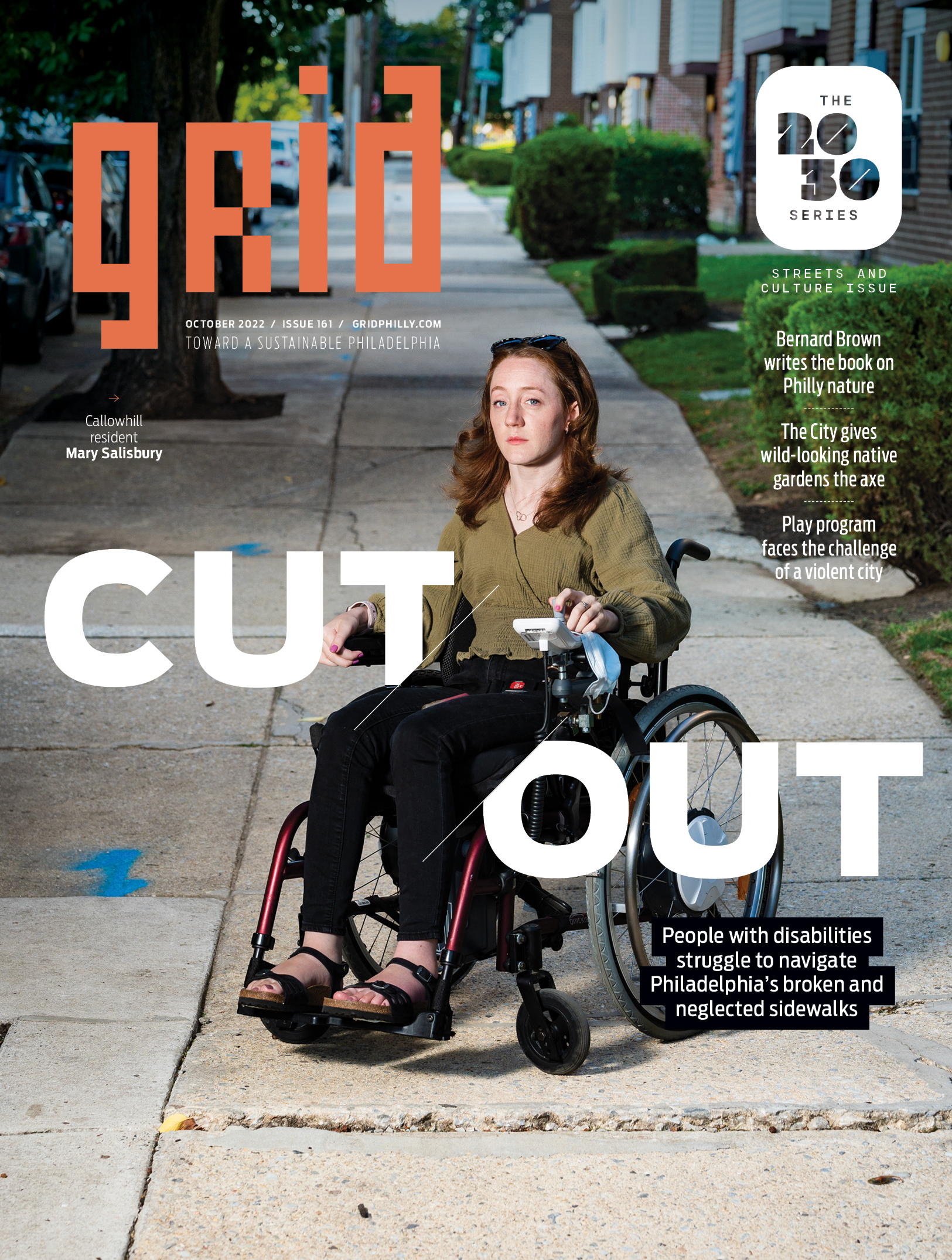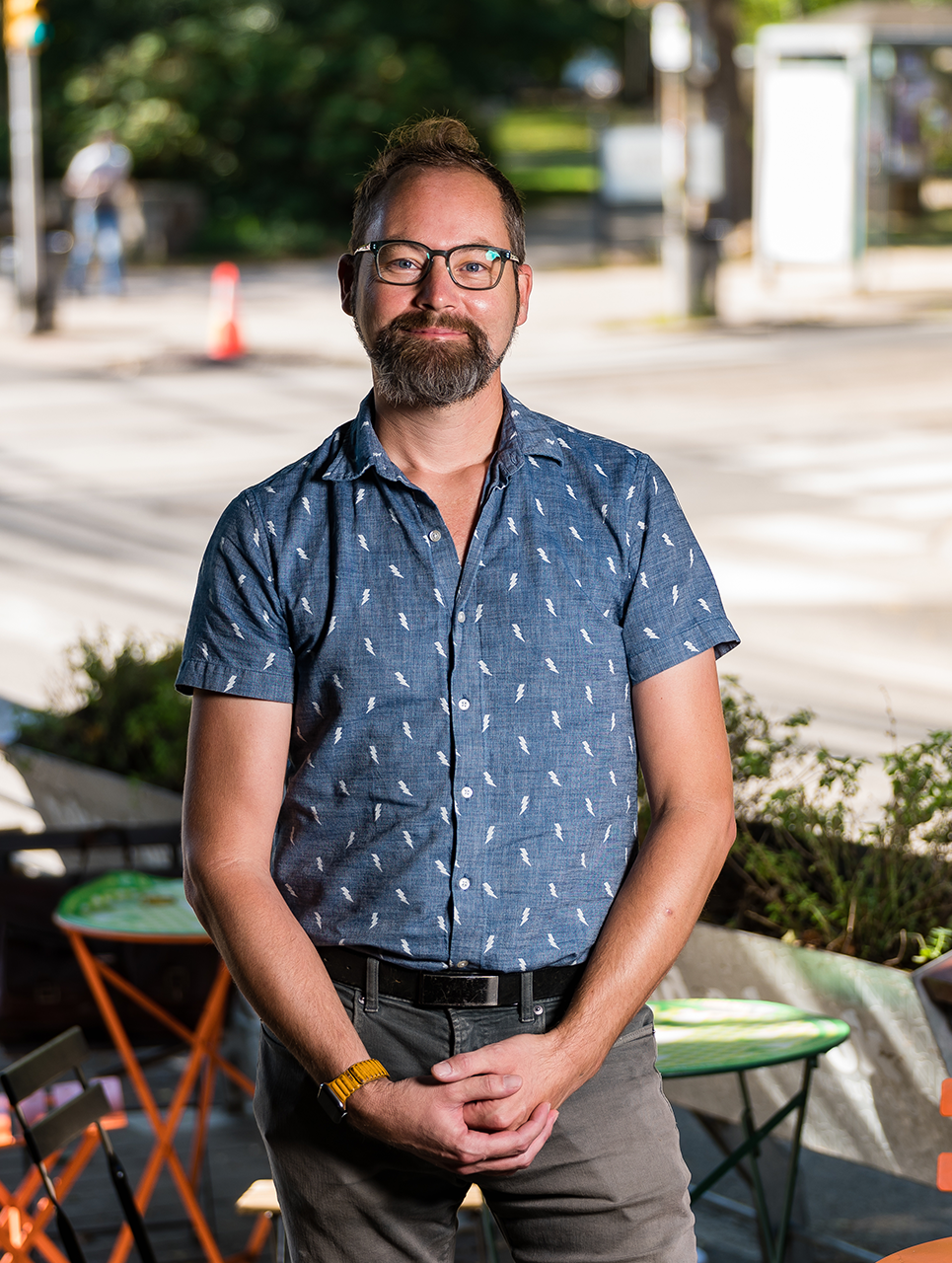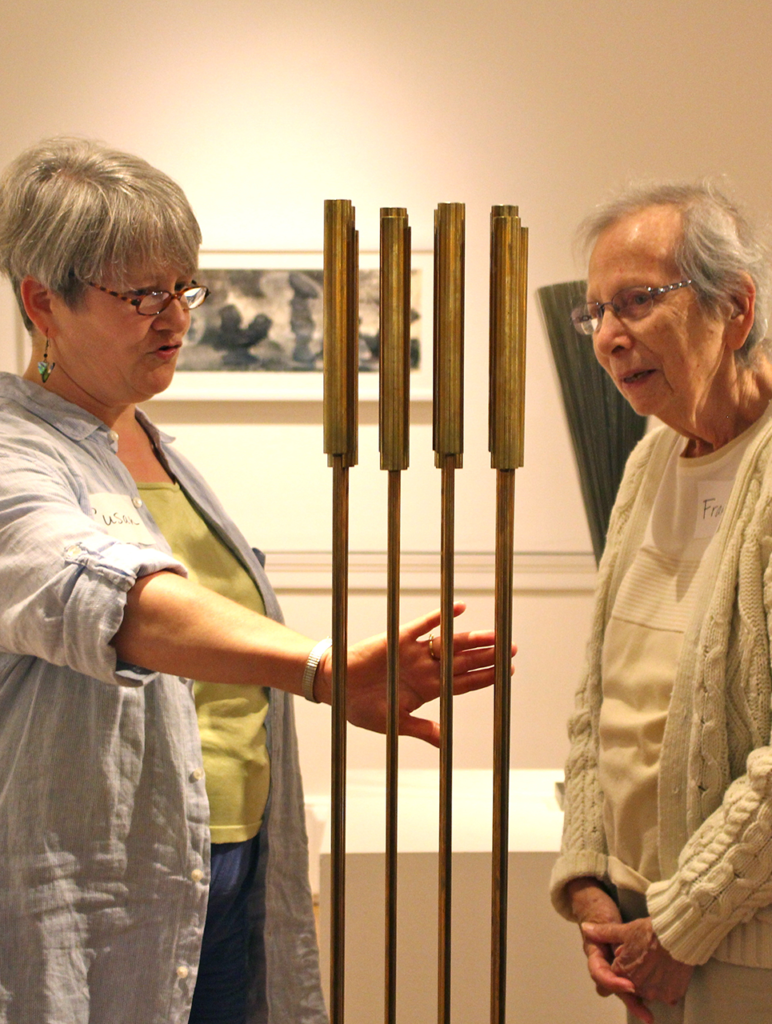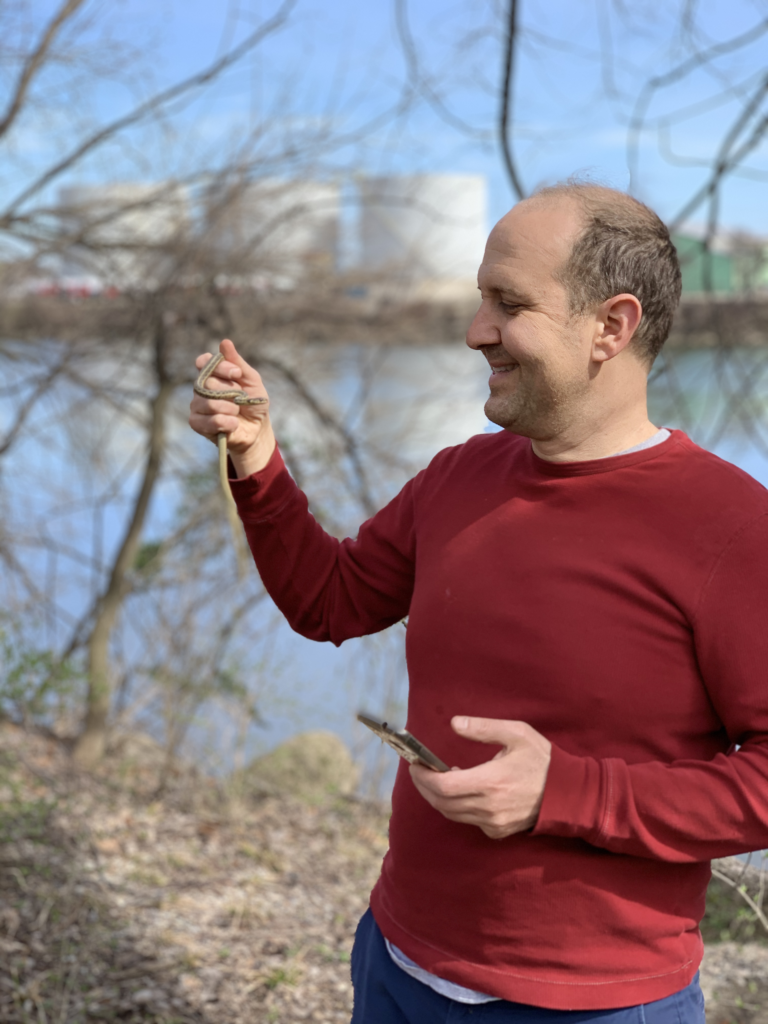Domonique Howell doesn’t like to roll through the street in her wheelchair, but sometimes it’s better than the sidewalk, like when a tree heaves up the concrete so much that her wheelchair could tip over. “I try not to because I’m with my daughter, who is eight, and it’s a dangerous thing to teach her, but there are times you have to,” Howell says. The two split up, so that her daughter walks on the sidewalk and then waits for Howell at the corner.
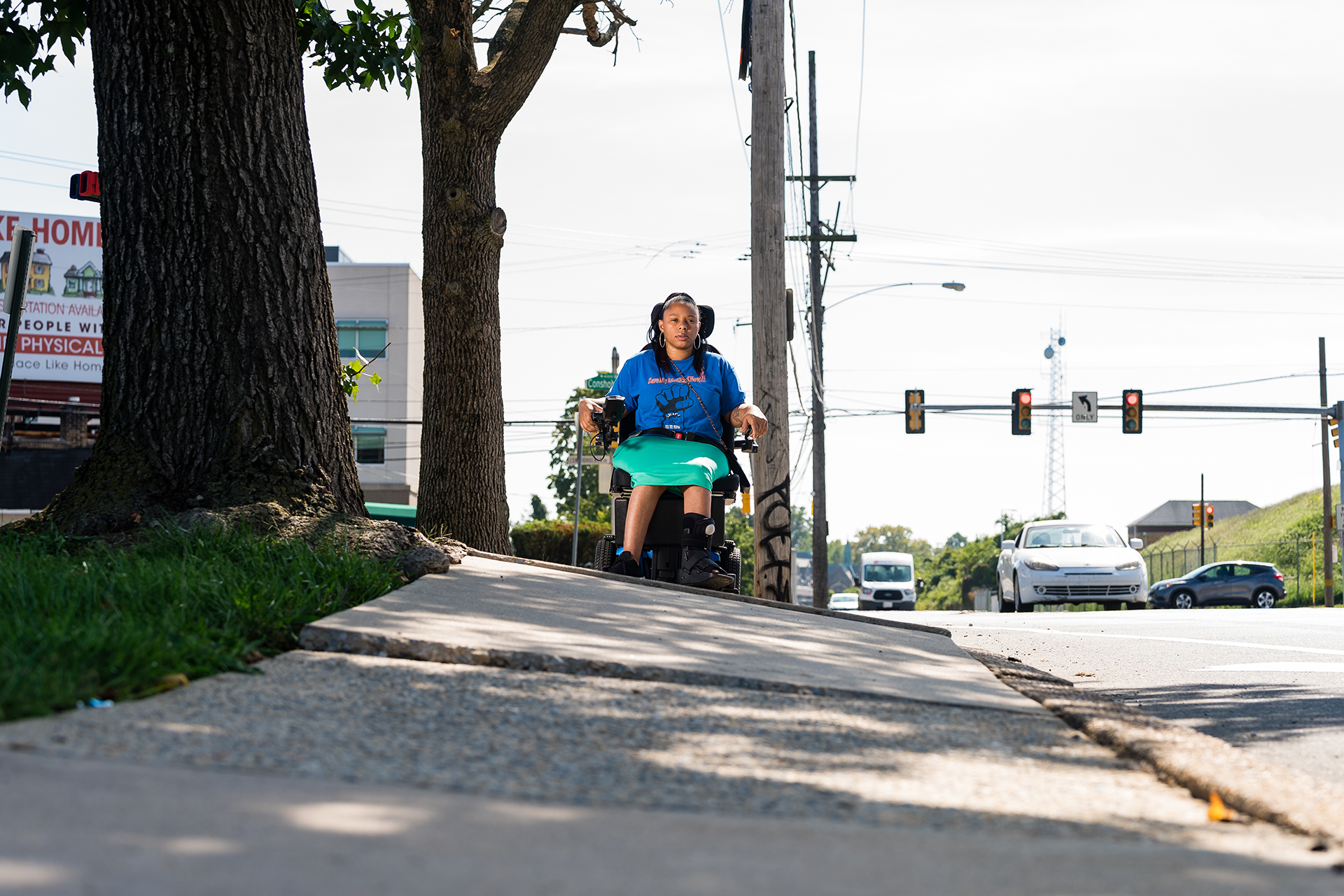
Even where the City has installed accessible ramps, getting around by wheelchair “sucks,” Howell says. Howell, who is active in the advocacy groups Disabled in Action of Pennsylvania and Philadelphia ADAPT, lives in West Philadelphia’s Wynnefield neighborhood, but her work as an independent living specialist with Liberty Resources takes her all over. “A lot of the sidewalks are broken up and/or disturbed by trees up under them, so they’re not flat, and for wheelchair users that kind of introduces a hard way to navigate throughout the city.”
I love Philadelphia. There’s so much to offer, but there definitely need to be improvements in sidewalks and roads.”
— Mary Salisbury, Callowhill resident and wheelchair user
Mary Salisbury, who lives in the Callowhill neighborhood, agrees. “It can be challenging and tiring, honestly,” she says. “I love Philadelphia. There’s so much to offer, but there definitely need to be improvements in sidewalks and roads…. There are a lot of cracks in the sidewalk that wheels get stuck in. Curb cutouts [ramps] can be steep or nonexistent.”
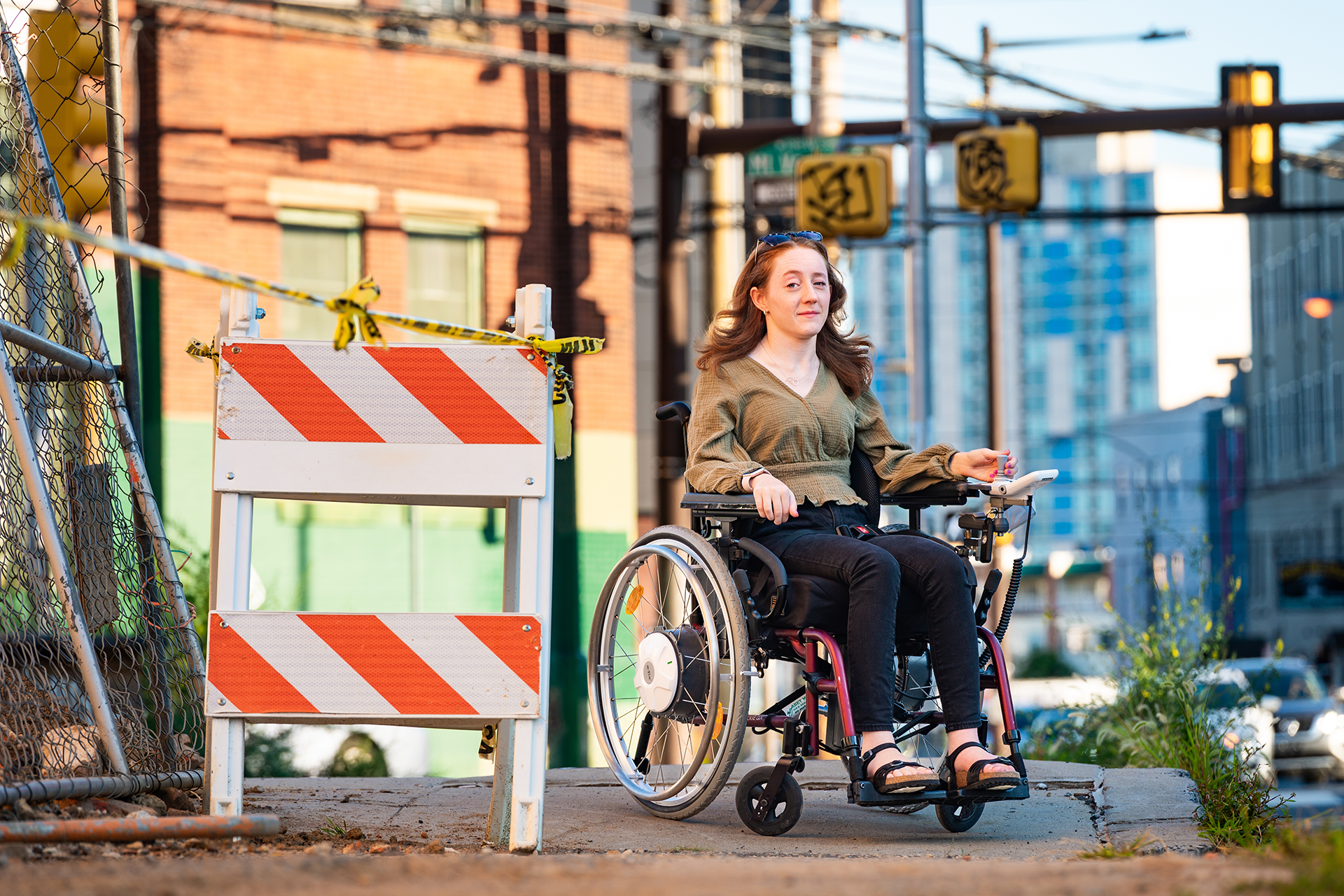
The design of those curb cutouts matters a lot, Salisbury says. If there is a lip between the ramp and the road surface, her wheels can get stuck at the bottom. An overly steep ramp is a hazard as well. People who use a wheelchair due to paralysis might not have the core strength needed to hold their torso upright as their chair leans forward on the way down a ramp, Salisbury says. “With some curb cutouts that are extremely steep, I turn around and go backwards.”
Poorly-built ramps can also be disgusting, with puddles forming at the bottom. “Some have a bigger dip and always have a puddle in the middle,” says Samantha Twining, a registered advocate with the United Spinal Association. “Any time it rains it stays there for a while.”
The City has been replacing older ramps with newer ones that comply with the 1990 Americans with Disabilities Act (ADA), but at a rate, advocates say, that is far too slow. A 1993 court decision found that the City was out of compliance with the ADA and mandated that it replace ramps on any sections of street being resurfaced.
The City’s glacial pace on improving sidewalks prompted more legal action. According to a 2019 lawsuit filed by disabled Philadelphians along with Liberty Resources, Inc.; Disabled in Action of Pennsylvania, Inc.; and Philadelphia ADAPT, in 2014 the City told disability rights groups that they would no longer systematically review and replace sidewalk ramps, but would only update them upon request. With only $3.2 million annually budgeted for ramps at that time, it would take 170 years to address the approximately 72,000 that needed to be replaced.
The plaintiffs in the 2019 lawsuit, titled Liberty Resources, Inc. v. the City of Philadelphia, are asking the City to comply with the ADA not only by coming up with a plan to install compliant ramps, but by also fixing the other problems that keep disabled Philadelphians from getting around, such as construction barriers, snow piles, parked cars blocking sidewalks and crosswalks, and poor maintenance.
Well before the ADA was passed in 1990, the City had a system for keeping sidewalks in good shape. Sidewalks are part of the public right of way but belong to the property owners next to them. According to “The Case for Sidewalk Repair,” a report prepared by the Delaware Valley Regional Planning Commission, from the 1940s to the 1970s, City workers proactively inspected sidewalks and notified property owners when their sidewalks needed to be repaired. If a property owner didn’t fix their sidewalk, the City had it repaired for them. Third parties then collected the cost of the repair. As the city grew poorer in the second half of the 20th century, the system broke down. In 2003 the law requiring property owners to pay for 100% of the cost of repairing their sidewalk was changed so that the City would pay for at least 70% of the cost. Today the total can be about $2,000 for a standard Philly rowhouse. It is possible to lodge a complaint about a broken sidewalk on Philly311, triggering an inspection, but this only results in a notice to the property owner. The City does not follow up if they ignore the notice. Since the City does not budget for its share of the cost, it thus avoids the expenditure.
The result is that the state of a neighborhood’s sidewalks depends on who can easily afford the repairs. The poorer the neighborhood, the worse the sidewalks — and the more disadvantaged the disabled residents.
While the condition of sidewalks and ramps depends on what residents can afford and what the City budgets, other barriers result from what could only be considered apathy by public agencies. Parking on the sidewalk or in crosswalks is illegal but rarely ticketed by the police or the Philadelphia Parking Authority. According to City parking violation data, since 2012 the two agencies have ticketed 65,803 cars for parking in crosswalks and 144,198 for parking on sidewalks, compared to more than 3.6 million for parking with an expired meter.
A quick evening walk in South Philadelphia makes clear that the City’s rules against sidewalk parking go unenforced. “Part of that is what everybody says about the fiasco that is parking in Philadelphia. ‘It’s our culture,’ and that is really irresponsible to the people directly affected by this,” says Nick Zuwiala-Rogers, transportation program director for the Clean Air Council, who supports Feet First Philly, a volunteer campaign that advocates for a walkable city. “We’ve all gotten to a curb cut that if you were not able bodied you would be stuck.”
Construction activity can also limit the freedom of disabled people to move through the city. “Construction is a good and bad thing,” Salisbury says. “It means they are building new apartments, but in the meantime construction tears up sidewalks and roads, and it blocks different areas so I have to completely cross a street of busy traffic to go around.”
Developers are supposed to provide accessible routes around sidewalks blocked by construction. The City lacks the capacity to inspect construction sites for illegal blockages or respond to complaints, according to Zuwiala-Rogers.
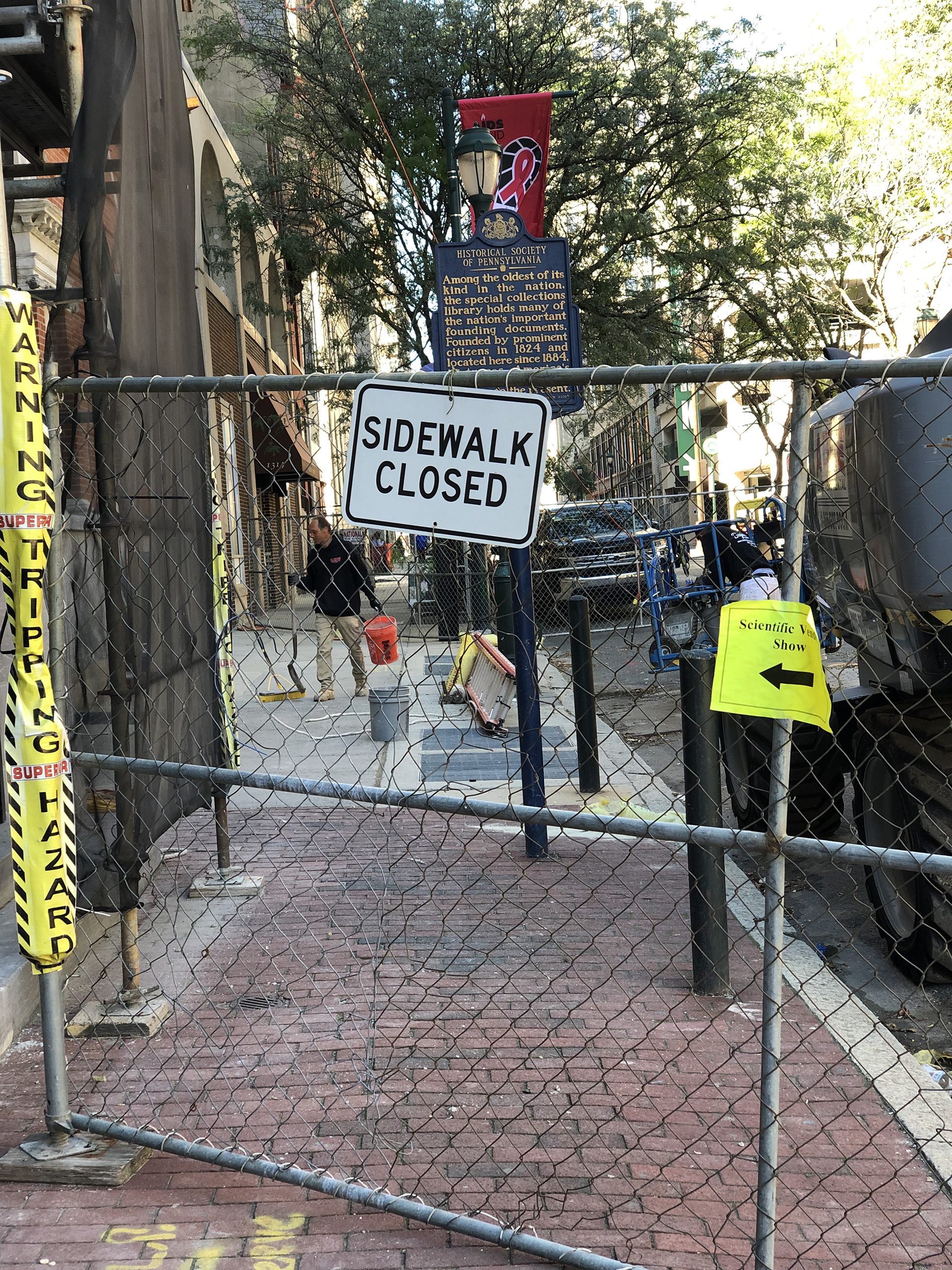
The problem of legal sidewalk blockages might be harder to solve. Developers can get out of providing a route around a blocked sidewalk by providing an engineering study justifying the blockage and paying a fee. That fee is only $4.50 per foot per week, versus $250 per day to block a traffic lane in the roadway. The documents justifying the blockage aren’t available to the public. “It should be public facing so that people can look up why that blockage happened without providing them a safe way to get around,” Zuwiala-Rogers says.
While some solutions, such as enforcing parking laws, might be obvious, others, such as helping low-income homeowners maintain their sidewalks, will require more study. Feet First Philly has requested for the last two budget cycles that the Department of Streets budget $500,000 per year to study how to improve Philadelphia’s sidewalks, a small sum for a department with a budget of $162 million. “It has gotten a lot of support from every Councilmember we have talked to, and yet for two years in a row the administration has made it clear it’s not something they’re prioritizing.”
You’re just leaving out a big chunk of your residents by saying we don’t have the money.”
— Domonique Howell, wheelchair user and advocate with ADAPT
For disabled Philadelphians impeded by the state of Philadelphia’s sidewalks, the City’s foot-dragging is a sign that they don’t matter to their elected officials.
“The excuse for decades is ‘We don’t have it. It’s not in our budget,’” Howell says. “I don’t see how that is relevant because you know what your population is. You’re just leaving out a big chunk of your residents by saying we don’t have the money.” And those left-out residents live disproportionately in low-income neighborhoods. “It shouldn’t be specific to where middle-class-to-the-rich live, but it should be a universal design for all of us.”
City officials declined to speak to Grid until Liberty Resources, Inc. v. the City of Philadelphia is resolved. At press time the two sides were negotiating a settlement that will determine how the City will comply with the ADA. It remains to be seen whether the City follows its previous pattern of failing to follow through.
In fiscal year 2023 the City has budgeted $27 million for repaving streets and repairing ramps. In a promising sign, this spring the City’s Department of Streets launched a 13-person maintenance team dedicated to upgrading curb cuts.
Councilmember Kendra Brooks commented by email that improving ADA compliance depends on fully funding and fully staffing City departments so that they can repair sidewalks quickly and respond to noncompliance by property owners and developers. “The City’s Streets Department has taken many strides to replace curb cuts over the last two years, finding internal solutions to the curb cut crisis that made conditions for people with disabilities really difficult to navigate. My office has been supportive of this work, and I have continually advocated for more funding dedicated specifically to ADA compliance, as well as for alternative methods of increasing City revenue, such as the Philly Wealth Tax.”
Howell points out that improvements to sidewalks and ramps help able-bodied people as well, whether they are pushing a stroller or simply don’t want to trip and fall on broken concrete.
And someone who is able bodied today can be disabled tomorrow. Twining connected the city’s gun violence epidemic to the importance of maintaining sidewalks in all of the city’s neighborhoods. “All these shootings that happen, people don’t tell you about the kids paralyzed. They tell you about the ones who are murdered, not where they go after their spine is shattered by a bullet.” Once they make it home, they have to get around on the sidewalks in their neighborhoods.
“People don’t think about this stuff unless it affects your life. Until one day it will,” Twining says. “This minority group doesn’t discriminate.”

